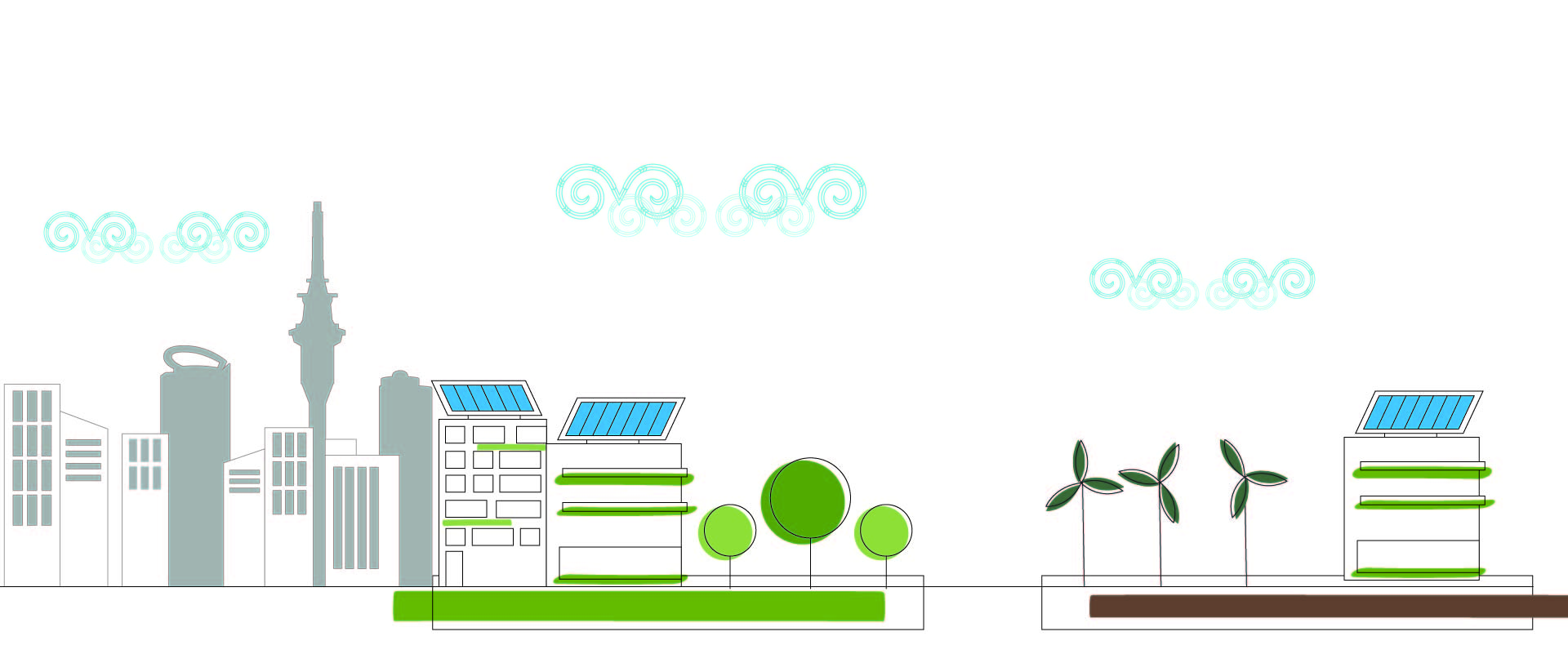Why this is a priority
Energy provides the electricity in our homes, the fuels in our transport system and the heat to manufacture products we use every day.
In 2016, stationary energy produced 26.6 per cent of Auckland’s total
emissions, and industrial processes produced 20.2 per cent.

Addressing supply and demand
There are two aspects of the energy system that need to be addressed - demand and supply. It is important to first optimise processes and ensure they are as efficient as possible. This reduces the energy demand but has limited ability to reduce emissions.
Addressing supply includes actions such as fuel switching (e.g. from coal to
biomass), which can deliver significant emissions reductions but can be expensive and requires commercially available technology. Moving away from fossil fuels can also reduce the volatility of price and supply from overseas sources.
Auckland has an advantage that approximately 84 per cent of New Zealand’s electricity supply is generated from
renewable sources.
However, energy is not just electricity. In fact, 66 per cent of Auckland’s energy emissions are from primary fuel combustion within the region, from fuels such as natural gas, coal and liquid petroleum gas (LPG) – see
Auckland’s Greenhouse Gas Inventory to 2016 (PDF 6.52 MB).
Auckland’s industry and emissions
The Auckland region has a large amount of industry, from primary metal manufacturers to food processors. Most industrial processes and commercial buildings use process heat, which is energy in the form of steam, hot water or hot gases, and are often produced through the combustion of natural gas.
Industrial processing plants also emit non-energy related greenhouse gases. In Auckland, these emissions are generated from the production of steel, from iron sand and from scrap metal and the use of soda ash and limestone in glass making .
In addition to energy demand and supply, there are emissions associated with industrial product use. These emissions are mainly from the use of hydrofluorocarbons (HFCs), which are common refrigerants in our cooling systems, such as air conditioning units and refrigerators. HFCs are powerful greenhouse gases, with global warming potentials 1430-4000 times higher than CO2.
Cooling units can leak these refrigerants, and even a small volume has impacts. It is important that the refrigerants are safely disposed of at the end of a cooling unit’s lifespan.
Decarbonised, decentralised energy generation
It is important that as we electrify our transport fleet and industrial processes, that the electricity supply to meet this demand is not generated from fossil fuels. Currently emissions from the electricity grid contribute to 7.6 per cent of Auckland’s total emissions and this will only increase with higher electricity demand.
It is important that the grid is decarbonised, there is an increase in the uptake of decentralised, resilient energy generation within the Auckland region and demand is reduced.
Decentralised energy systems can improve the resilience of Auckland’s network and reduce reliance on the centralised grid, which could be impacted by a natural hazard and increased storm events. It also enables communities to share and generate their own electricity and could help reduce energy poverty.

Renewable energy generation on Great Barrier Island
There are multiple co-benefits in moving towards a decarbonised energy system. Electrification of transport vehicles and process heat will improve Auckland’s air quality. The distributed energy generation model can increase community participation in the energy system and reduce energy poverty.
Transport-related emissions are addressed in the
Transport priority and the resilience of the energy network and infrastructure is covered in the
Built environment priority.
Read about
roles and partnerships to deliver our actions and the
indicators that track our progress for the Energy and industry priority.
